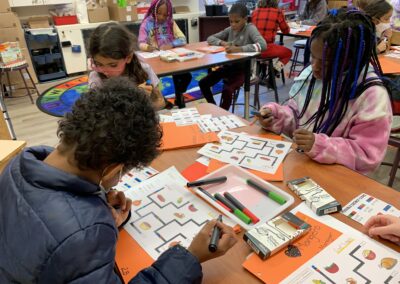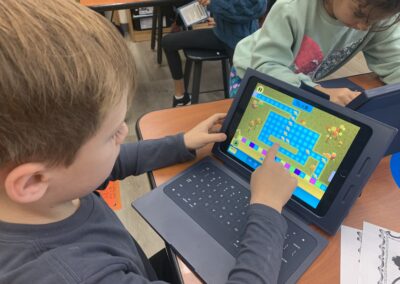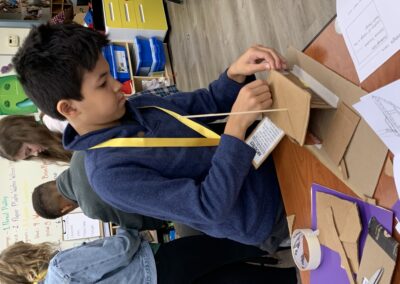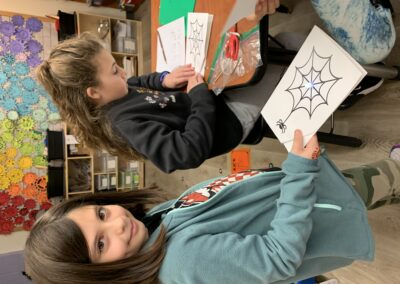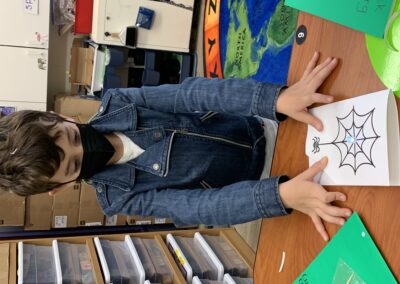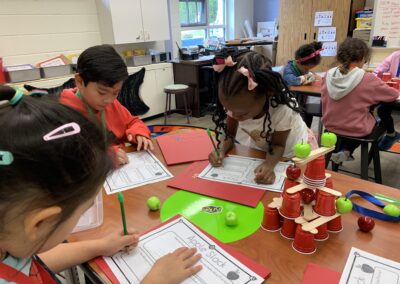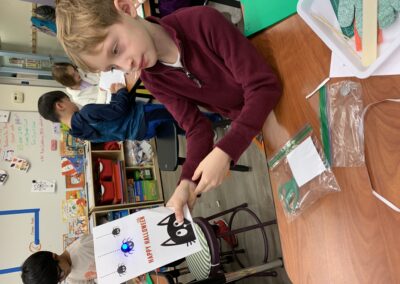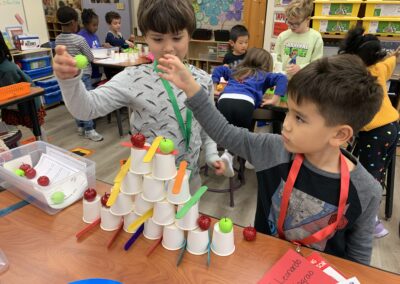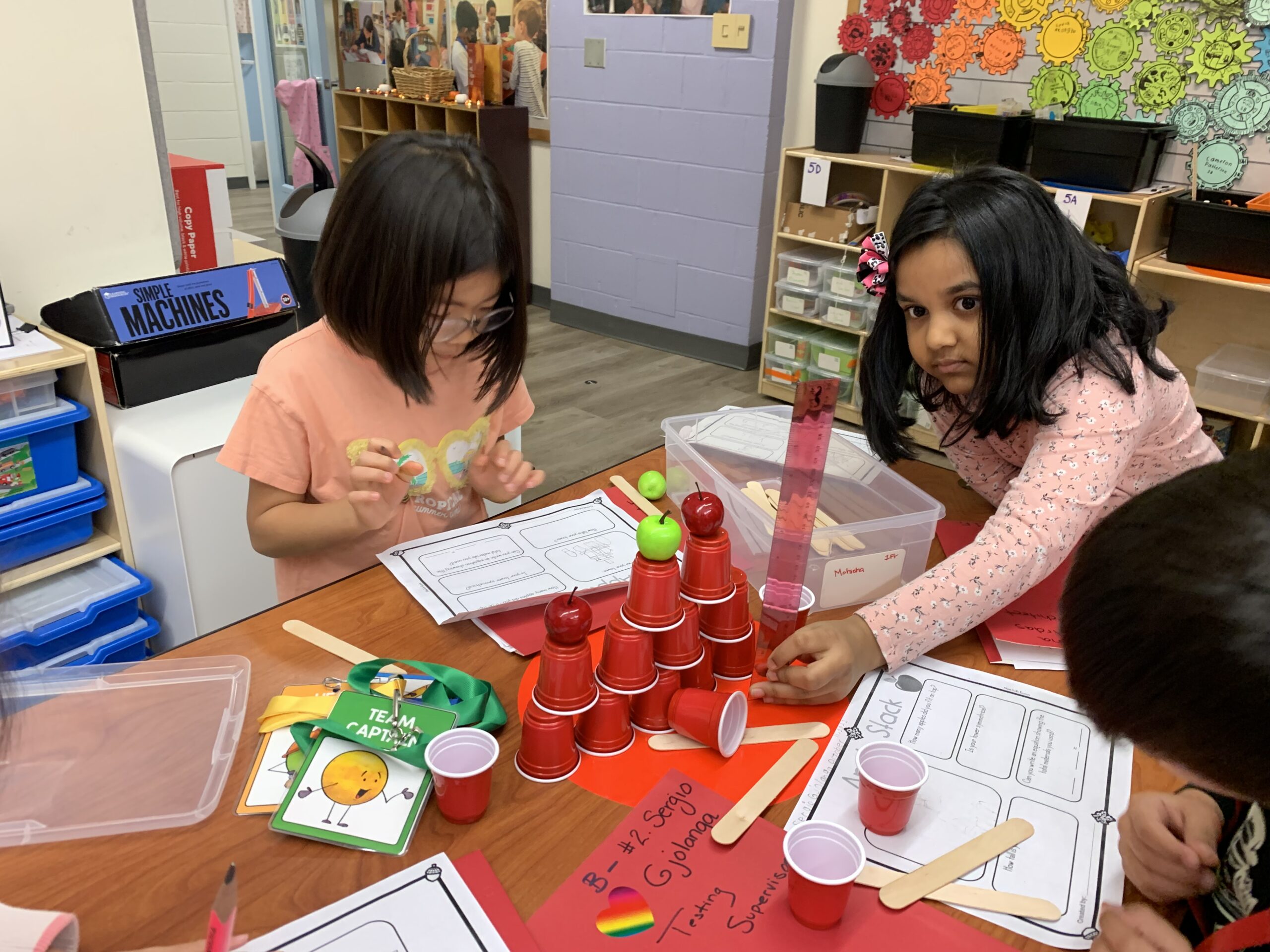
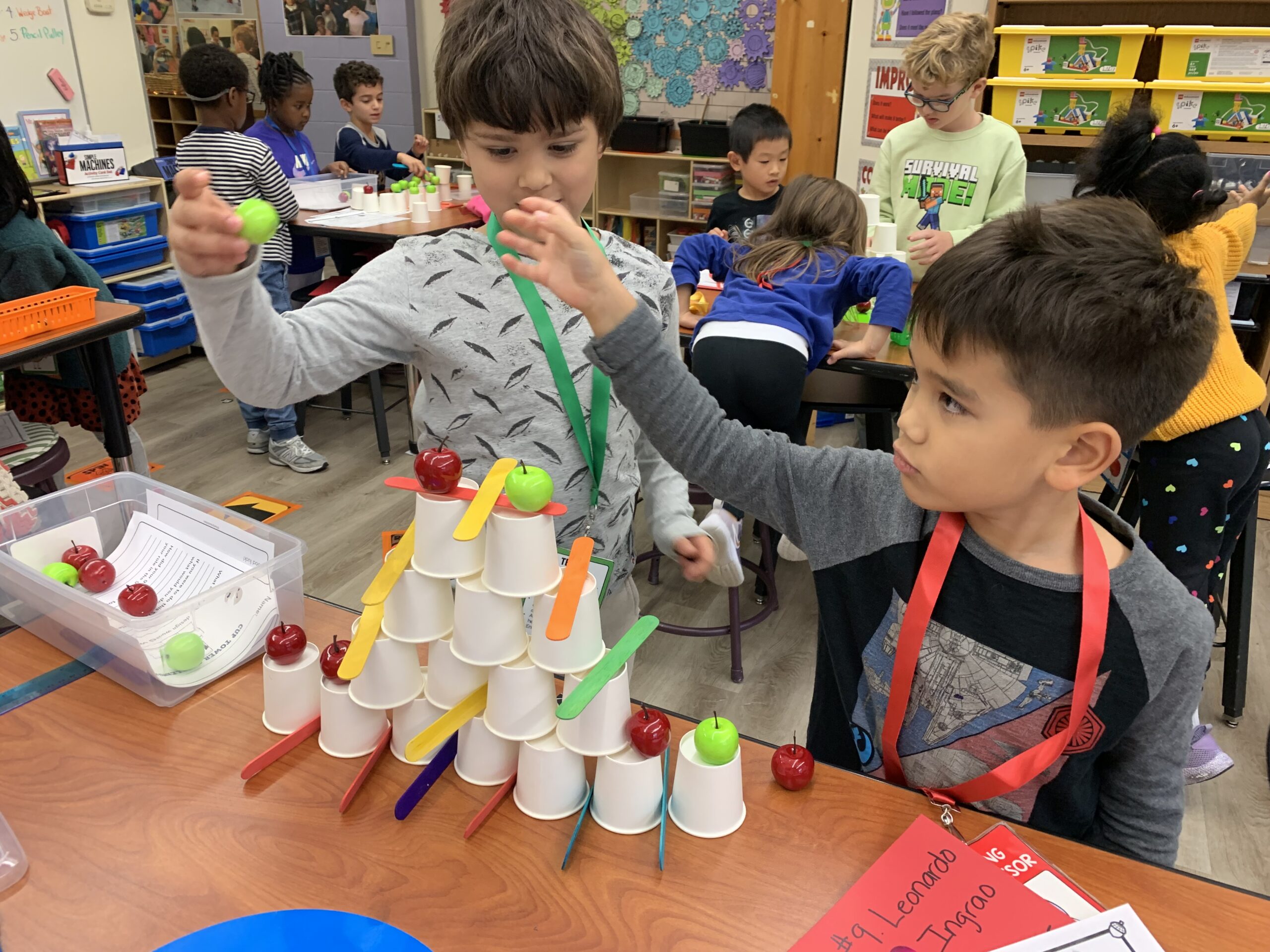
Students in STEM are challenged daily to: Try hard things!
If solutions were easily obtained, students would not be motivated to try something new, to discover for themselves and to invent new products. Through communication, collaboration, critical thinking and creativity STEM students are shining brightly!
First graders learned a great lesson from STICKS, to always believe in yourself and the answers will often appear. Working with sticks and cups, students built apple collecting structures. First graders experienced augmented reality with unique Dots. Next, first grade STEM students were introduced to coding by hopping through commands and a sequence of tasks placed around the STEM room. They created paper code maps of the tasks required to prepare for school. Currently, they are working in Kodable learning the basics of sequence, conditions and debugging! Students have taken Kodable home to adopt pets.
Second grade students created a fuzz, made a maze and refined coding skills before working through the Kodable challenges for October. As experienced coders, students completed tasks in the pumpkin patch and the enchanted forest to finally participate in gathering candy as they virtually traveled door to door.
Second graders participated in a zoom book presentation by Stephen Curry. After listening to Steph share his new book, students were left with the message that having HEART is a valuable superpower. Students are preparing to use Ozobots as they march balloons down Broadway in the parade.
Third grade students discovered how Crayola started. Next, they invented their own crayon collection as well as a device to transport them. Students continue to work hard as they experiment to create simple circuit paper cards. Through experimentation with the basic components of the circuit: battery, copper tape and LED bulb, students work to create a closed circuit that results in a light up card. As paper engineers, students often go back over their designs to troubleshoot problems in the circuits. Third graders discovered the positioning of the battery, the smooth path of the insulated tape and the direction of the bulb legs (positive and negative) all play important roles in successful lighting! Students persevered to the end while focusing on the task without giving up, as evident in a few proud faces shared below.
Fourth grade STEM students built and tested structures that would withstand the motion of an earthquake based on research and engineering designs. Students discovered a few techniques to reduce the effects of an earthquake. Following the engineering design process, students constructed structures to test on an earthquake simulator. As students noted the effectiveness of certain structures, they observed commonalities and the importance of recording data. Currently, fourth graders are using TUVA to analyze data around hurricanes.
Fifth grade STEM students have gained a solid foundation surrounding simple machines after experimenting outside with a pulley on the jungle gym, a lever lifting five gallons of water and a ramp to hoist twenty-five pounds. Students then carried out indoor challenges allowing them to put their simple machine knowledge to the test. Some groups constructed a “water” wheel powered by rice or a catapult to launch a penny. Students are currently completing independent projects utilizing one or more simple machines designed to help others make a task easier by creating a mechanical advantage. Each project should include a 3D printed component while the remaining parts are constructed from recycled materials.

